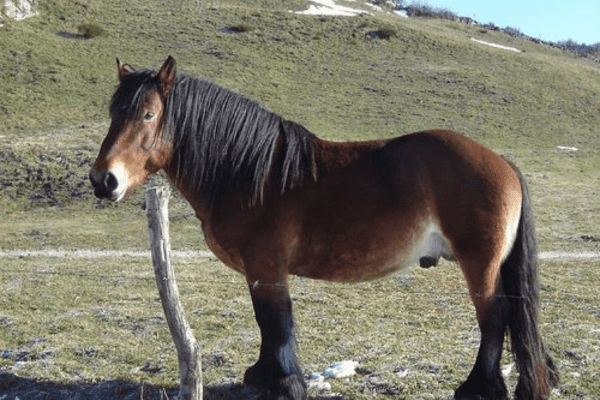The Asturcón breed, steeped in historical significance, originates from Asturias, a region in the northern part of Spain known for its rich cultural heritage. This small, yet robust breed of horse, distinguished by its remarkable and rare ambling gait, represents a significant part of the equestrian history of Spain.
The Asturcón’s enduring presence in Asturias highlights its importance not just as a breed, but as a symbol of the region’s enduring traditions and natural beauty.
History:
Ancient Roots and Roman Recognition
Origin in Roman Era: The Asturcón horse, with its profound historical roots, first emerges in the annals of history during the Roman times. Its existence and unique characteristics were noted by prominent figures of the era.
Literary Mentions: Notably, the breed finds mention in the works of Martial and Pliny the Elder. In Pliny’s “Naturalis Historia”, the Asturcón’s ambling gait is specifically highlighted, showcasing its early recognition for this distinctive trait.
The Latin Term ‘Asturco’
Etymological Influence: The breed’s influence extended to linguistic realms, where the term ‘asturco’ in Latin was coined, derived from the breed’s name. This term later came to broadly denote similar small horses known for their ambling gait.
The Spanish Civil War and Genetic Divergence
Geographical Split: A pivotal moment in the breed’s history occurred around the Spanish Civil War. This era marked a significant geographical and genetic division within the Asturcón population.
Distinct Populations: One group adapted to the sierras of Sueve and La Vita, while another thrived in the western sierras of El Palo, La Bobia, and Tineo. This division led to the development of distinct genetic lines within the breed.
Conservation Efforts in the Late 20th Century
Formation of Breeders’ Association: Recognizing the need for preservation, the Asociación de Criadores de Ponis de Raza Asturcón was established in 1987, marking a new chapter in the breed’s conservation.
Growth in Numbers: Initially, the association registered a modest number of 23 mares. This number grew impressively to 1,181 by 2003, a testament to the dedicated efforts of the 94 breeders involved.
FAO Recognition: In 2007, the breed’s conservation status was acknowledged globally when it was classified as “endangered-maintained” by the FAO.
Contribution to the Irish Hobby
Genetic Influence on Extinct Breeds: The Asturcón’s genetic lineage is notable for its influence on the now-extinct Irish Hobby. Efforts to revive this lost breed frequently reference the Asturcón’s genetic profile.
Role in Equestrian History: This connection underscores the Asturcón’s broader significance in the tapestry of equine history, beyond its regional importance in Spain.
Conclusion: A Living Historical Legacy
More Than a Breed: The Asturcón horse represents a living connection to history, embodying the cultural and natural heritage of its region.
Symbol of Preservation: Its journey from ancient times to the present day highlights not only the importance of conservation efforts but also the enduring bond between humans and these remarkable animals.
Cultural and Historical Emblem: The Asturcón’s story is a vivid illustration of how a horse breed can transcend its role in agriculture and transport to become a symbol of cultural identity and historical continuity.

Physical Characteristics:
Asturcón horses are small, typically standing between 11.2 and 12.2 hands high. They possess a robust and muscular build, with a thick mane and tail, reflecting their adaptation to the cool, damp climate of northern Spain. Their coat colors range from black to bay, often with a distinctive mealy muzzle.
Temperament and Versatility
Known for their even temperament and intelligence, Asturcón horses are highly valued for their versatility. They are excellent for riding, especially for children and beginners, due to their gentle nature. Their agility and sure-footedness also make them ideal for navigating the challenging landscapes of Asturias.
Conservation Efforts
By the late 20th century, the Asturcón breed faced the threat of extinction due to modernization and a shift away from traditional farming practices. However, dedicated breeders and local communities rallied to preserve these horses. Their efforts led to the establishment of breeding programs and the annual “Fiesta del Asturcón,” celebrating the breed and raising awareness of its cultural importance.


The Asturcón in Modern Times
Today, the Asturcón horse is a living symbol of Asturian culture and heritage. While still used in some traditional farming practices, they have also found a new role in eco-tourism, offering a sustainable way to explore the Asturian countryside. The breed’s story is a testament to the enduring bond between humans and horses and the importance of preserving cultural heritage.
The Asturcón horse, with its rich history and enduring spirit, stands as a beacon of cultural pride for the Asturias region and an example of successful conservation efforts, embodying the harmony between human progress and the preservation of heritage breeds.

